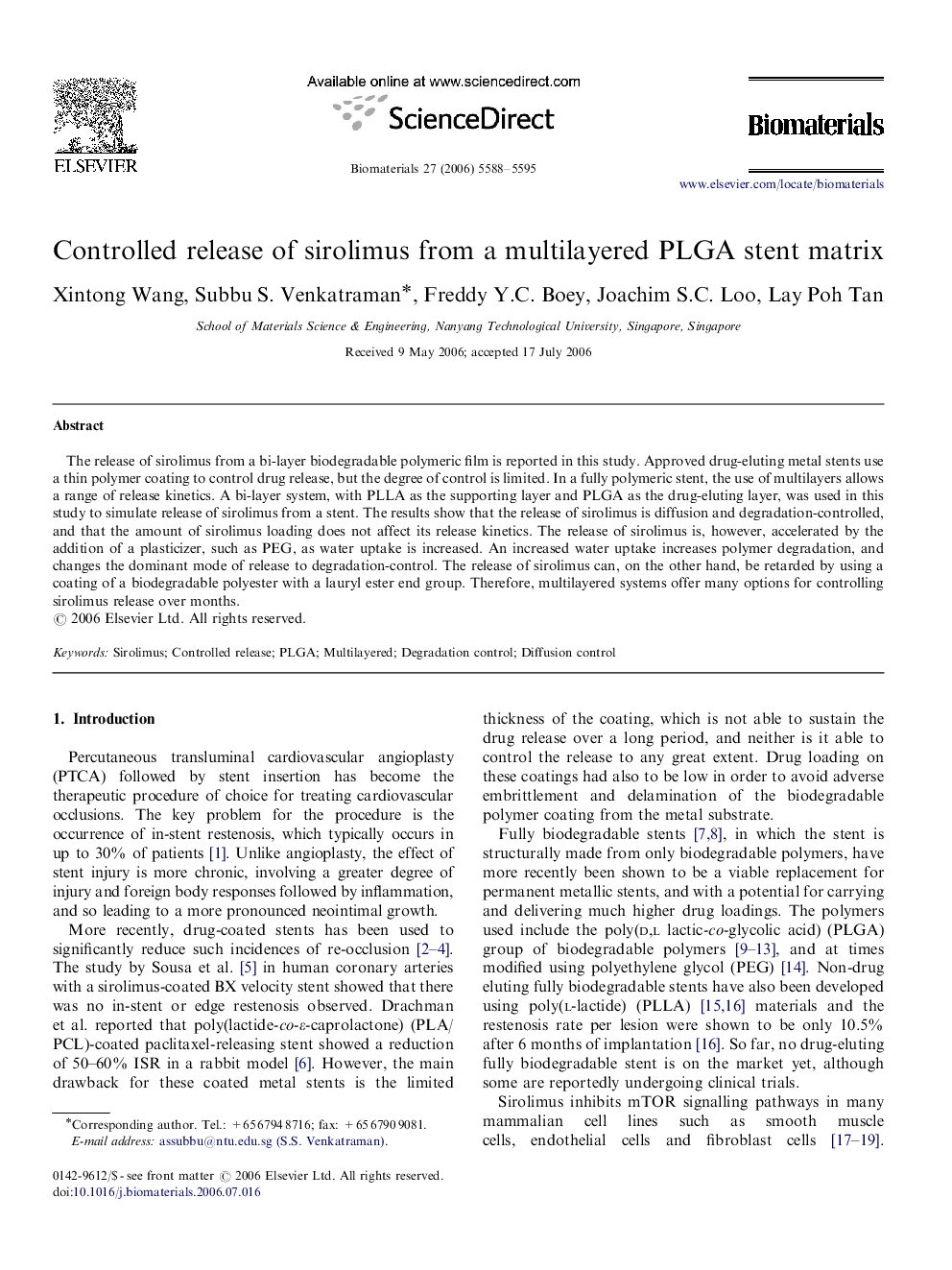| Article ID | Journal | Published Year | Pages | File Type |
|---|---|---|---|---|
| 11241 | Biomaterials | 2006 | 8 Pages |
The release of sirolimus from a bi-layer biodegradable polymeric film is reported in this study. Approved drug-eluting metal stents use a thin polymer coating to control drug release, but the degree of control is limited. In a fully polymeric stent, the use of multilayers allows a range of release kinetics. A bi-layer system, with PLLA as the supporting layer and PLGA as the drug-eluting layer, was used in this study to simulate release of sirolimus from a stent. The results show that the release of sirolimus is diffusion and degradation-controlled, and that the amount of sirolimus loading does not affect its release kinetics. The release of sirolimus is, however, accelerated by the addition of a plasticizer, such as PEG, as water uptake is increased. An increased water uptake increases polymer degradation, and changes the dominant mode of release to degradation-control. The release of sirolimus can, on the other hand, be retarded by using a coating of a biodegradable polyester with a lauryl ester end group. Therefore, multilayered systems offer many options for controlling sirolimus release over months.
